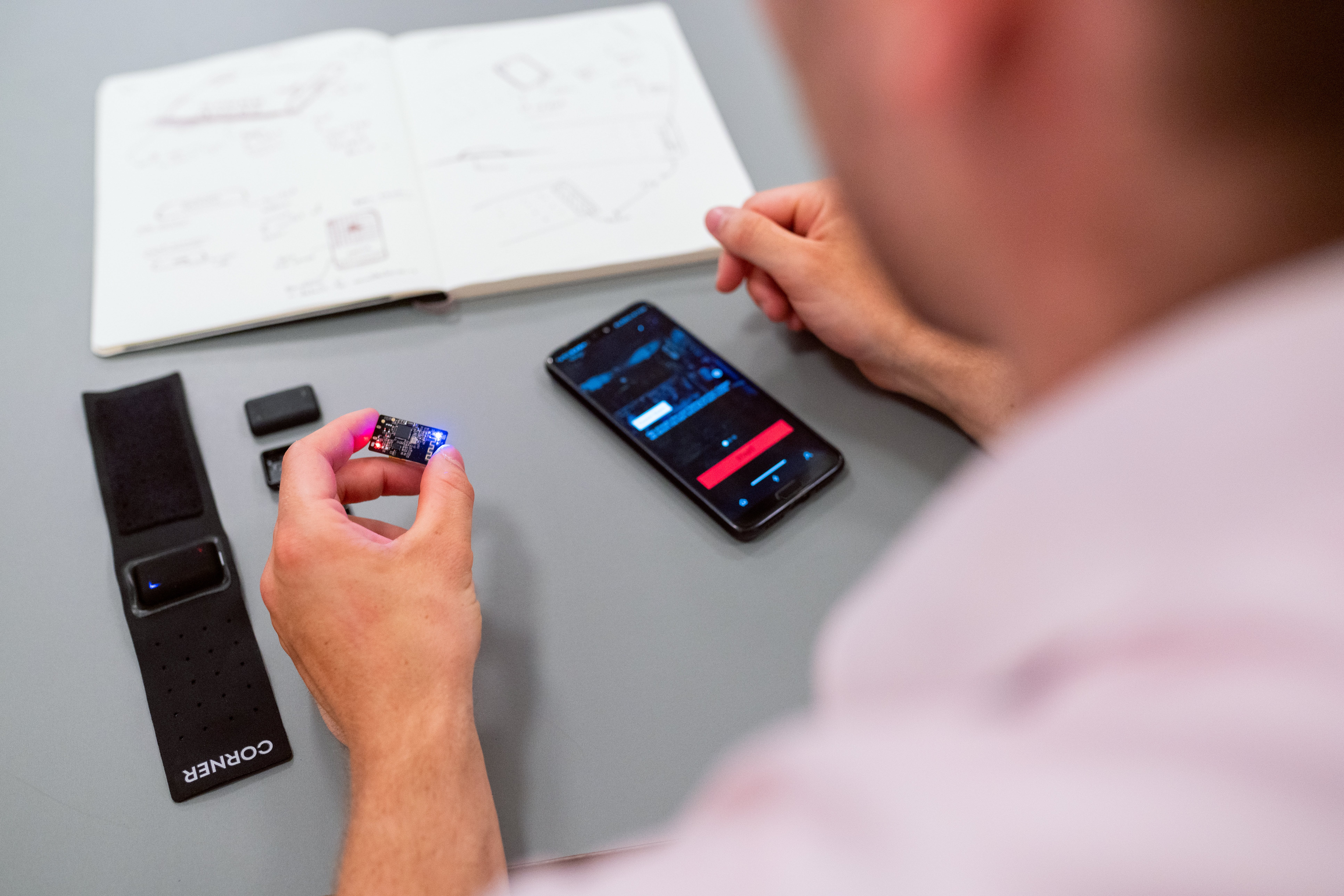Mobile App Development Kya Hai? Explained!

The term “mobile app development kya hai” translates to “what is mobile app development” in English, and it refers to the process of creating software applications that run on mobile devices. This process encompasses a series of steps from ideation to launch, including requirement gathering, design, development, testing, and deployment. With the burgeoning use of smartphones, the need for robust and innovative mobile apps is more critical than ever.
At Biz4Solutions, we understand that mobile app development is not just about coding; it’s about creating a seamless user experience that translates into successful engagement with your target audience. Our team leverages the latest technologies and follows best practices to ensure your app stands out in the competitive digital marketplace. Whether it’s a native app built for specific platforms like iOS or Android, or a cross-platform app that functions across multiple operating systems, we are dedicated to providing tailored solutions that fit your business needs.
As the mobile landscape continues to evolve, staying updated with the latest trends and technologies in mobile app development becomes paramount. Our experts are committed to helping businesses navigate this landscape, ensuring they harness the power of mobile applications to enhance customer experience and achieve sustainable growth.
The Lifecycle of Mobile App Creation

The lifecycle of mobile app creation is a comprehensive journey that begins with an idea and culminates in a product ready for the end-users. It starts with the conceptualization phase, where the core idea is refined and documented, often through a product requirement document. Following this, the planning stage involves deciding on the necessary features, project timelines, and resource allocation.
The next phase is design, which is critical as it addresses the user interface (UI) and user experience (UX) design. This step determines how the app will look and feel to the users, emphasizing intuitive navigation and aesthetic appeal. Subsequently, the development phase is where the actual coding takes place. Developers must choose the right technology stack and follow coding standards to build a stable and scalable app.
Testing is an indispensable phase where the app is rigorously tested for bugs, performance issues, and usability. Quality Assurance (QA) teams ensure that the app meets all the technical requirements and provides a glitch-free user experience. Once the app passes through the testing phase, it enters deployment, where it is launched on platforms like the Apple App Store or Google Play Store.
However, the work doesn’t end post-launch. The post-launch maintenance and updates phase is crucial for keeping the app relevant, secure, and in line with the evolving user needs and technological advancements. This ongoing process is essential for the app’s longevity and success in the competitive app market.
Technologies Powering Modern Mobile Apps

Behind every successful mobile app is a suite of powerful technologies that drive its operations and user experience. Mobile app development kya hai (what is mobile app development) is often defined by the technologies used in the process. Modern mobile apps are powered by a mix of programming languages, frameworks, and tools that enable developers to create feature-rich and efficient applications.
One of the key technologies in mobile app development is the programming language used. For iOS applications, Swift and Objective-C are the go-to languages, offering robust performance and a rich ecosystem. Android apps frequently rely on Java and Kotlin, with Kotlin gaining popularity for its concise syntax and interoperability with Java.
Cross-platform frameworks like React Native and Flutter are revolutionizing the industry by allowing developers to write code once and deploy it on both iOS and Android platforms. These frameworks save time and resources while maintaining a native-like user experience. Furthermore, backend technologies such as Node.js, Ruby on Rails, and Python’s Django support the server-side of mobile applications, ensuring fast processing and scalability.
To enhance the interactivity and real-time features of mobile apps, technologies like WebSocket and WebRTC are employed. They provide seamless communication channels for chat applications, live streaming, and more. Moreover, cloud services like AWS, Google Cloud, and Azure offer a scalable infrastructure for hosting and managing mobile app data securely.
Lastly, the integration of Artificial Intelligence (AI) and Machine Learning (ML) algorithms is becoming commonplace, enabling apps to offer personalized experiences and intelligent functionalities. As these technologies continue to evolve, they are setting new benchmarks for what mobile apps can achieve, further expanding the horizons of mobile app development kya hai.
Strategies for Successful Mobile App Development

Developing a mobile app that stands out in the highly competitive market requires a well-thought-out strategy. A key aspect of understanding mobile app development kya hai is recognizing the need for a comprehensive plan that encompasses market research, user-centric design, and agile development methodologies.
Commencing with in-depth market research is critical. This involves identifying the target audience, understanding their needs and preferences, and analyzing competitor apps. Such research informs the app’s unique value proposition and feature set, ensuring it fulfills a specific market need.
Focus on user experience (UX) is paramount, as it can make or break an app’s success. This means designing an intuitive and engaging interface that enhances usability while minimizing complexity. UX should be considered at every stage of development, with regular user testing to validate design choices and functionality.
Adopting an agile development approach allows for flexibility and rapid iteration based on feedback. Agile practices enable the team to adjust the project scope, fix issues, and add features in response to user testing and client needs. Furthermore, a strong emphasis on quality assurance through comprehensive testing is essential to ensure the app is reliable, secure, and performs well across devices and operating systems.
Finally, a successful strategy must include a plan for ongoing maintenance and updates. The mobile landscape is continually changing, with new OS versions, hardware, and user expectations. Regular updates not only keep the app current but can also introduce new features to maintain user interest and engagement over time.
Monetization and Marketing of Mobile Apps

Understanding mobile app development kya hai is incomplete without considering the monetization and marketing strategies that can turn an app into a profitable venture. Monetization strategies need to be aligned with user expectations and app functionality to ensure a seamless user experience while generating revenue.
One popular monetization model is in-app purchases, where users can buy virtual goods, additional features, or premium content. This model works well for apps that offer high value and have an engaged user base. Another approach is subscription-based models, offering access to content or services for a recurring fee. This model promises a steady revenue stream and is suitable for apps with regularly updated content or services.
Advertising is another avenue, where apps display third-party ads to users. However, it’s crucial to balance ad placement and frequency to avoid hindering the user experience. Sponsorships and partnerships with brands can also provide monetization opportunities, especially for apps with a niche audience.
For marketing, leveraging social media platforms and influencer partnerships can boost visibility and user acquisition. Implementing App Store Optimization (ASO) techniques will improve the app’s discoverability in app stores. Additionally, user feedback and ratings are vital, not only for insights into potential improvements but also for building credibility and trust among prospective users.
Robust marketing campaigns should begin well before the app’s launch, creating anticipation and buzz. Post-launch, continuous engagement through updates, offers, and community building can keep users invested and attract new ones. Thus, a well-planned monetization and marketing strategy is essential for the app’s long-term success and sustainability.
Future Trends in Mobile App Development
As the mobile landscape continues to evolve, staying abreast of the future trends in mobile app development is crucial for businesses looking to maintain a competitive edge. Emerging technologies like Artificial Intelligence (AI) and Machine Learning (ML) are revolutionizing the way apps are developed and used, enabling personalized and predictive user experiences.
Another significant trend is the rise of Internet of Things (IoT) integration, where apps communicate with connected devices, opening up new possibilities for home automation, healthcare, and industrial applications. The adoption of Augmented Reality (AR) and Virtual Reality (VR) is also gaining traction, offering immersive experiences that can enhance gaming, education, and retail apps.
Moreover, the focus on cross-platform development is intensifying with frameworks like Flutter and React Native, allowing developers to create apps that run seamlessly across multiple operating systems with a single codebase. This not only reduces development time but also ensures a consistent user experience across devices.
As sustainability becomes a global priority, ‘green coding’ practices and the development of eco-friendly apps that minimize energy consumption will become more prevalent. Ensuring data privacy and security will also be a top trend, as users are becoming increasingly aware of their digital footprint.
At Biz4Solutions, we are at the forefront of these technological advancements, providing our clients with state-of-the-art mobile app solutions that are equipped for the future. By partnering with us, businesses can leverage these trends to create innovative and future-proof mobile applications.
Embrace the future of mobile app development with Biz4Solutions, where innovative solutions meet cutting-edge technology.




